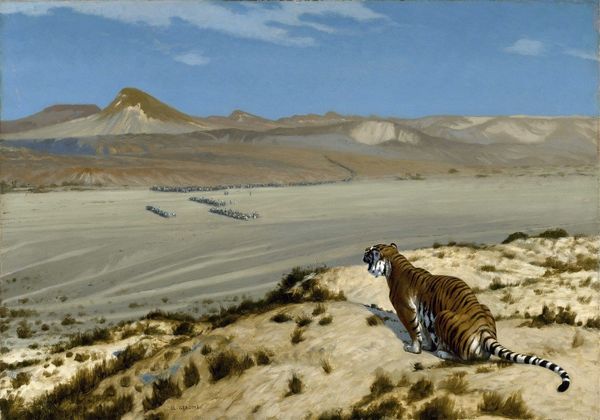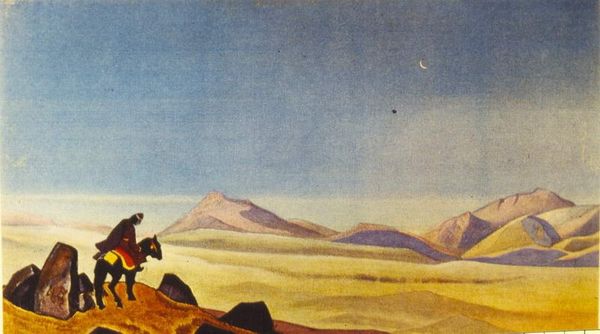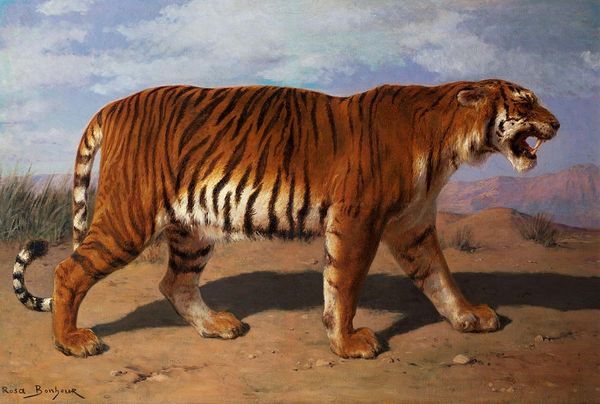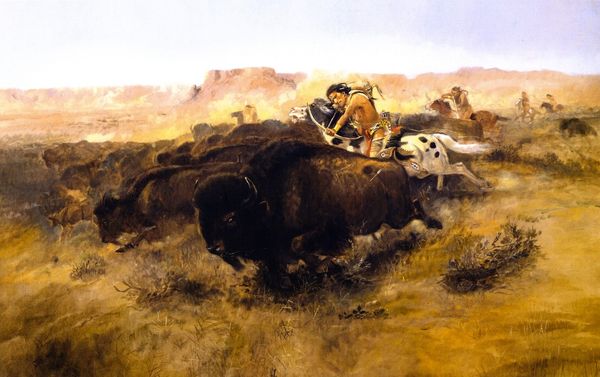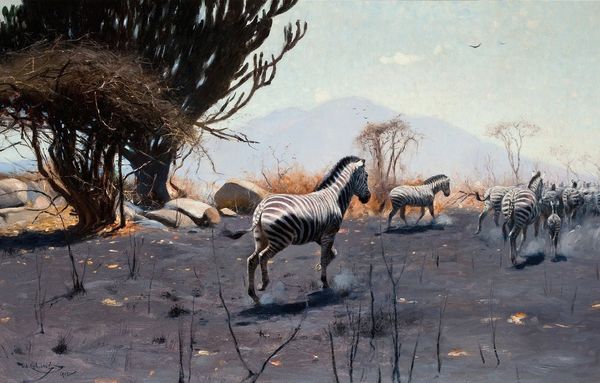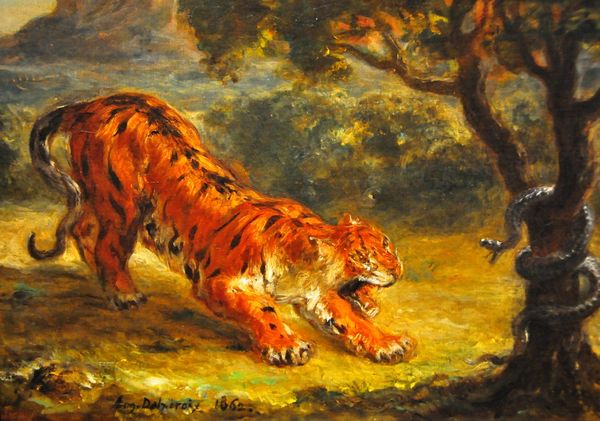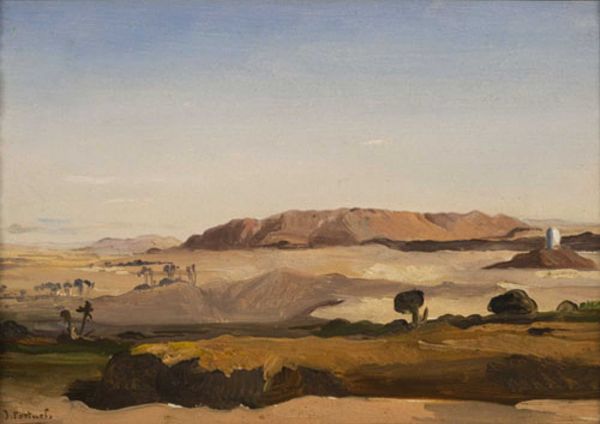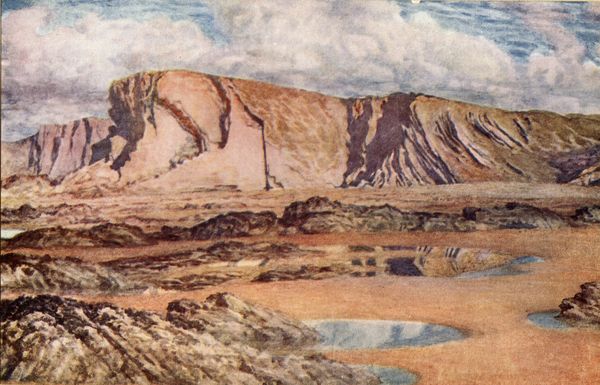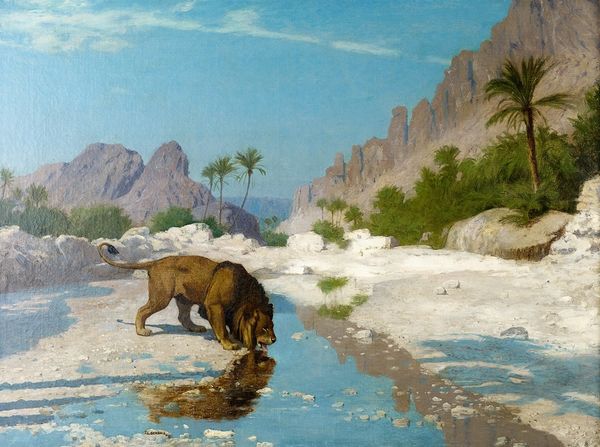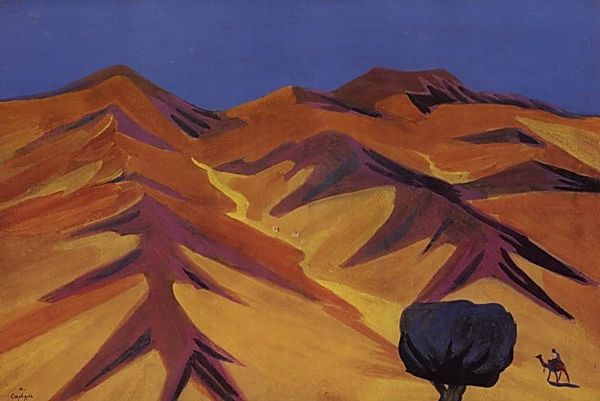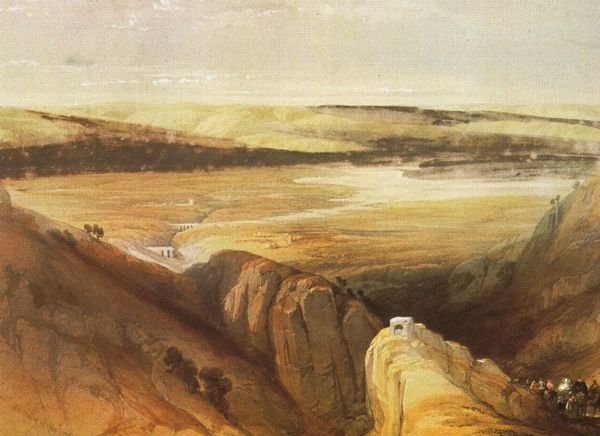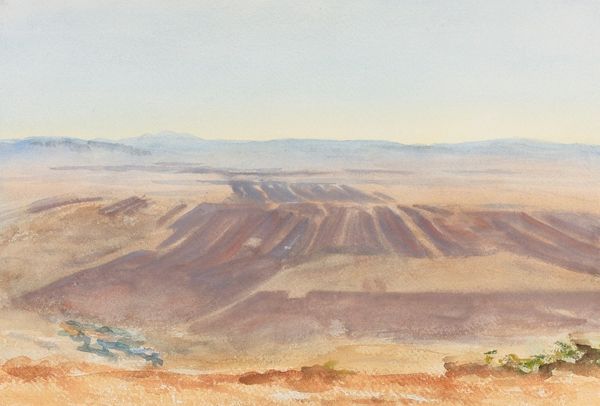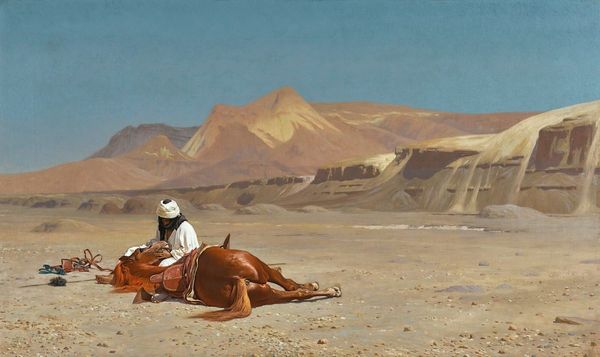
painting, oil-paint
#
animal
#
painting
#
oil-paint
#
landscape
#
figuration
#
oil painting
#
orientalism
#
academic-art
#
realism
Copyright: Public domain
Curator: This painting, titled "Tiger on the Watch", attributed to Jean-Léon Gérôme, employs oil paint to depict a striking scene dominated by a large cat surveying a distant landscape. It really jumps out doesn't it? Editor: It does indeed. The vastness of the landscape behind the tiger immediately makes me think of the orientalist paintings, but in this one, it has a very lonely, tense feeling to it. Is that a procession I see in the distance? Curator: Indeed. That tension you feel might be exactly what Gérôme intended, that touch of apprehension. Those small figures are human, a caravan seemingly dwarfed and overseen by nature. In Gérôme's time, representations like this would often highlight the so-called 'power of the east.' Editor: Fascinating, this relationship between the figure and the field. Looking closer at the animal itself, there’s such incredible detail. What does the image of a tiger represent in this context? A sentinel perhaps? Curator: Absolutely. The tiger functions as more than just a creature. It could easily be seen as a guardian spirit of that land. Look at its alert posture, the slightly opened mouth as though warning against some transgression on the land. There’s also a strong element of danger here. Editor: You can feel that potential energy radiating off of it! And yet, even with that magnificent tiger in the foreground, the painting doesn't feel triumphant, not entirely, something I initially presumed. The procession suggests the inevitability of man in the landscape, as though nature is doomed to be overtaken. Curator: You make an excellent point. Consider how that procession mirrors trade and colonialism that advanced with it, disrupting environments, altering social fabrics and diminishing the "guardians" of those regions. Editor: Looking again, I see a melancholic layer, that perhaps the tiger, on the watch as it is, might soon be irrelevant. It shifts how I interpret the landscape, this imminent clash. Curator: It certainly gives a layer to our considerations beyond the merely representational, I quite agree. Well, there's food for thought, and plenty more to explore on the canvas I’m certain! Editor: Absolutely, it's been insightful diving into the symbolism with you; one can’t help but consider the past within our present reality, thanks so much!
Comments
No comments
Be the first to comment and join the conversation on the ultimate creative platform.
